This Old-Fashioned Cornbread, made in a cast iron skillet, combines a soft, fluffy inside with crispy edges, and a hint of sweetness from a touch of sugar. It's quick and easy, ready in just 40 minutes. Plus, it uses simple ingredients and goes perfectly with your favorite comfort meals.

Want to know the secret to making the most delicious homemade cornbread?
It’s a cast iron skillet!
That’s right - baking cornbread in a cast iron skillet is the secret to achieving crispy, buttery edges, and a soft, moist, and fluffy center.
Today, I’m walking you through how to make the best old-fashioned cornbread with cornmeal, including which ingredients to use, tips that will guarantee it turns out right the first time, and some of my favorite dishes to serve with this easy comfort food side dish.
Disclaimer: Some links throughout this post are affiliate links. As an Amazon Associate, I earn from qualifying purchases. You can learn more by visiting my Affiliate Disclosure Page.
Northern or Southern Old-Fashioned Cornbread
Being from New England, I grew up enjoying northern-style cornbread. This type of cornbread is typically made with sugar and is softer, sweeter, and more cake-like in texture.
On the other hand, old-fashioned southern cornbread often contains no sugar. It’s also made with a higher cornmeal-to-flour ratio so it has a denser and more crumbly texture.
This old-fashioned cornbread recipe mirrors the northern style I'm familiar with - lightly sweetened with a soft, fluffy texture and crispy edges.
Why You'll Love This Recipe
- Quick & Easy- Ready in just 40 minutes, this quick cornbread recipe is impressive, easy to make, and perfect for beginners.
- Simple Ingredients- All of the ingredients in this recipe are pantry staples and are easy to find at the grocery store.
- Buttery Flavor- Whether you choose to melt or brown the butter, each bite of this skillet cornbread is infused with rich, buttery goodness.
- Lightly Sweetened- With just a ¼ cup of sugar, this fluffy cornbread has just the right amount of sweetness.
- Soft with Crispy Edges- Pouring the batter into a hot cast iron skillet guarantees that this cornbread will have irresistibly crispy, buttery edges to compliment its soft, fluffy center.
- Comfort Food- Pair this easy old-fashioned cornbread with hearty, comfort food dishes like chili, braised beef, roasted chicken, and more.
Ingredient Notes
Here are some notes on key ingredients. For a full list of ingredients, check out the recipe card below.
- Cornmeal- Choose your preferred type of cornmeal - finer for a smoother texture or coarser for a heartier bite. Yellow or white cornmeal both work well.
- All-Purpose Flour- Adds structure and stability to the cornbread, making it less crumbly.
- Sugar- Many are divided on the use of sugar in old-fashioned cornbread with buttermilk. Personally, I prefer my cornbread lightly-sweetened so I add ¼ cup of sugar. Feel free to adjust based on your taste preferences.
- Butter- Browning the butter adds a nutty depth of flavor. However, if you prefer a quicker method, melting in the microwave is equally effective.
- Eggs- Provides structure and helps hold the cornbread together.
- Buttermilk- The acidity in buttermilk activates the baking soda. It also adds moisture and imparts a slight tangy flavor.
- Baking Powder and Baking Soda- Both baking powder and baking soda help the cornbread rise.
- Kosher Salt- Enhances the flavor of the other ingredients. I prefer kosher salt because it does not contain added sugar or anti-caking agents like table salt often does.
🌱 Sustainability Tip: Choose local ingredients, like dairy from a nearby farm and grains from a local mill, to reduce transportation emissions and support a more sustainable, community-centered food system.
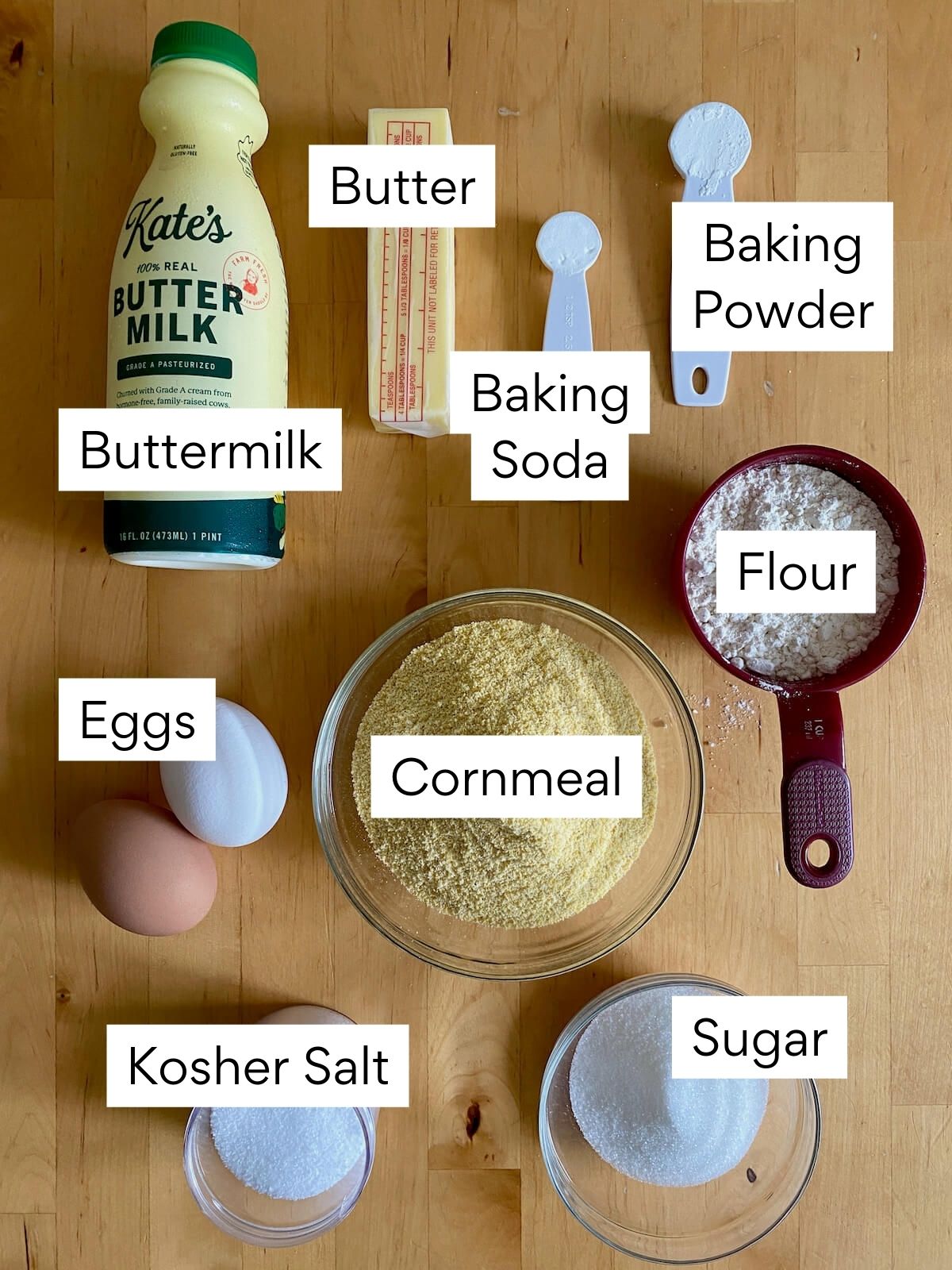
Substitutions and Variations
Here are a few ways you can customize this cast iron cornbread recipe to fit your diet and taste preferences.
Substitutions
- Cornmeal- Substitute cornmeal with fine corn flour, grits, or polenta.
- All-Purpose Flour- Swap some or all of the all-purpose flour with whole wheat flour for a heartier flavor and texture.
- Sugar- Use an equal amount of maple syrup, honey, or brown sugar in place of granulated sugar.
- Butter- Replace butter with margarine, dairy-free butter, bacon fat, or vegetable oil. If using oil, start with 6 tablespoons and adjust as needed.
- Eggs- For an egg-free option, use flaxseed or chia seed "eggs" (1 tablespoon ground seeds + 2 ½ tablespoons water per "egg").
- Buttermilk- For 1 ½ cups buttermilk, mix 1 ½ tablespoons of lemon juice or white vinegar with enough milk to make 1 ½ cups. Let it sit for a few minutes until it thickens.
- Kosher Salt- Coarse sea salt or pink Himalayan salt can be used in place of kosher salt. If using table salt, use only ¾ teaspoon.
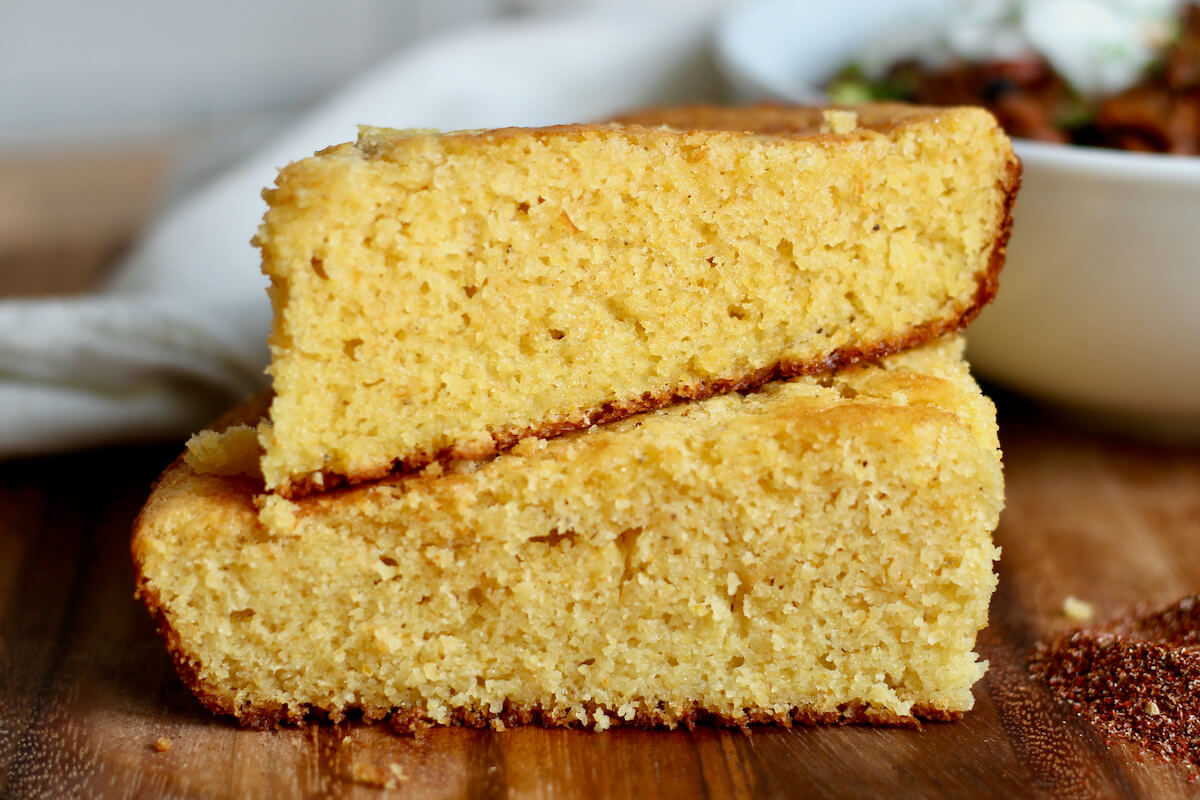
Variations
- Sourdough- Have sourdough discard you're trying to use up? Give my sourdough discard cornbread recipe a try!
- Jalapeño Cheddar- Add finely chopped jalapeños and shredded cheddar cheese to the batter for a spicy, cheesy kick.
- Honey Butter- Replace the sugar with honey in the batter for a sweeter, honey-infused cornbread. Serve with a dollop of honey butter on top.
- Bacon Chive- Add crispy bacon bits and chopped fresh chives for a smoky, savory flavor.
- Cheesy Corn- Fold in fresh or thawed corn kernels and shredded cheddar cheese into the batter for extra texture and flavor.
Additional Mix-Ins
- Fresh Corn
- Pickled Jalapeños
- Roasted Red Peppers
- Sun-Dried Tomatoes
- Roasted Garlic
- Caramelized Onions
- Fresh Herbs (Thyme, Rosemary, Chives, Cilantro)
- Crumbled Bacon or Sausage
- Cheddar Cheese
- Parmesan Cheese
- Feta Cheese
- Toasted Pecans or Walnuts
- Orange Zest
- Fresh Cranberries
- Diced Bell Peppers
- Black Olives
Equipment Notes
Here are some notes on any special equipment I used to make this recipe.
- Cast Iron Skillet- Using a well-seasoned 10-inch cast iron skillet is recommended for achieving that classic crispy crust. If you don't have one, a baking dish can be used as an alternative.
- Stainless Steel Skillet (optional)- I recommend using a stainless steel skillet for browning the butter because it's light in color, making it easy to see the subtle changes in the butter as it browns.
How to Make Old-Fashioned Cornbread
Here is how to make cornbread from scratch.
Step 1: Preheat the skillet. Place a 10-inch cast iron skillet in the oven and preheat to 425°F.
Step 2 (Option 1): Melt the butter. Cube 8 tablespoons of butter, place it in a microwave-safe bowl, and heat on HIGH power in the microwave in 30-second intervals. Stir between each interval until the butter is fully melted. Set aside to cool slightly.
Step 2 (Option 2): Brown the butter. In a stainless steel skillet over medium heat, melt the 8 tablespoons of butter. Continue to cook, stirring frequently, until it turns golden brown. When the milk solids change to a toasty brown color, remove the pan from the heat and pour the butter into a heat-proof bowl to prevent it from burning. Set aside to cool slightly.
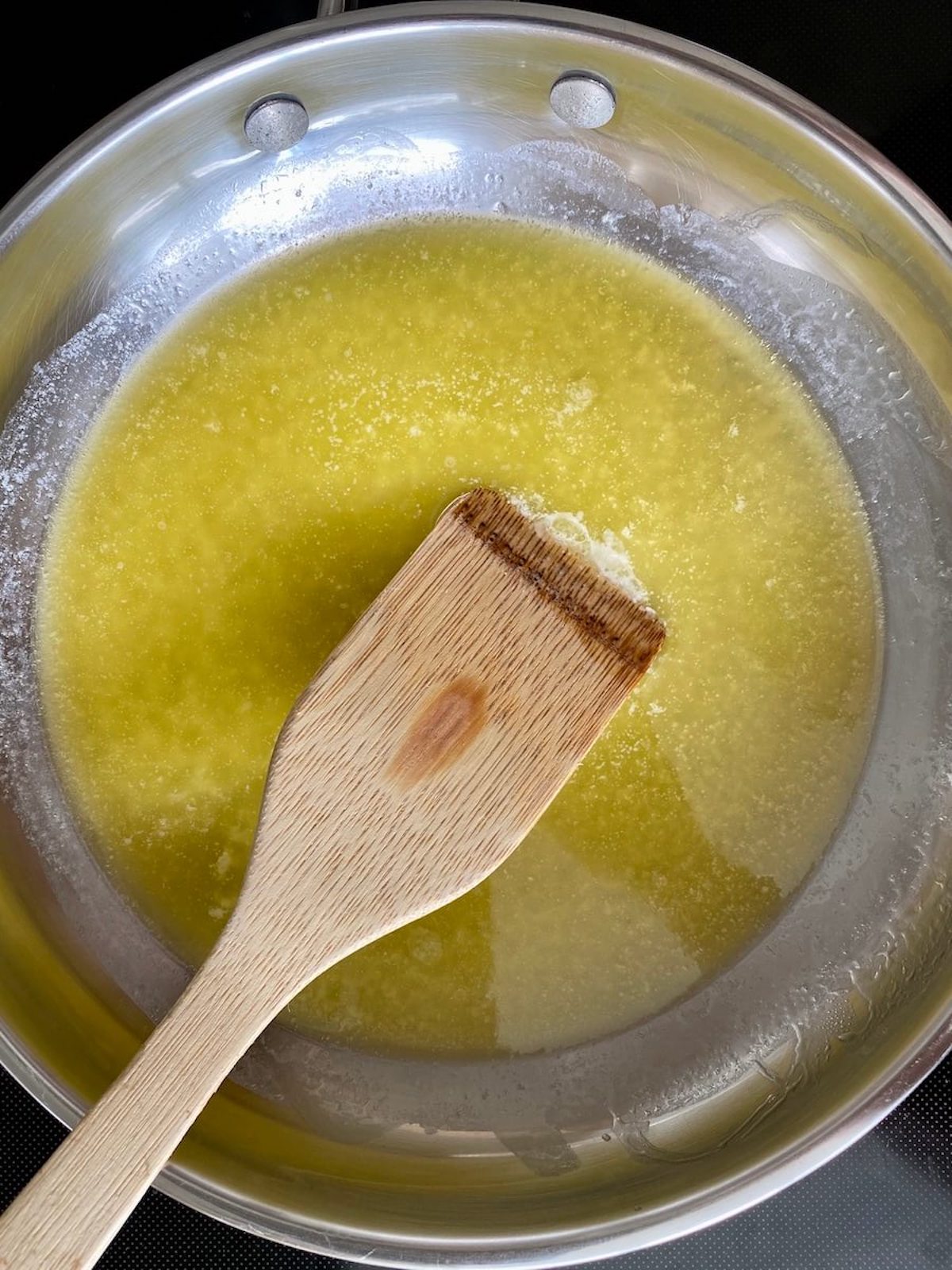
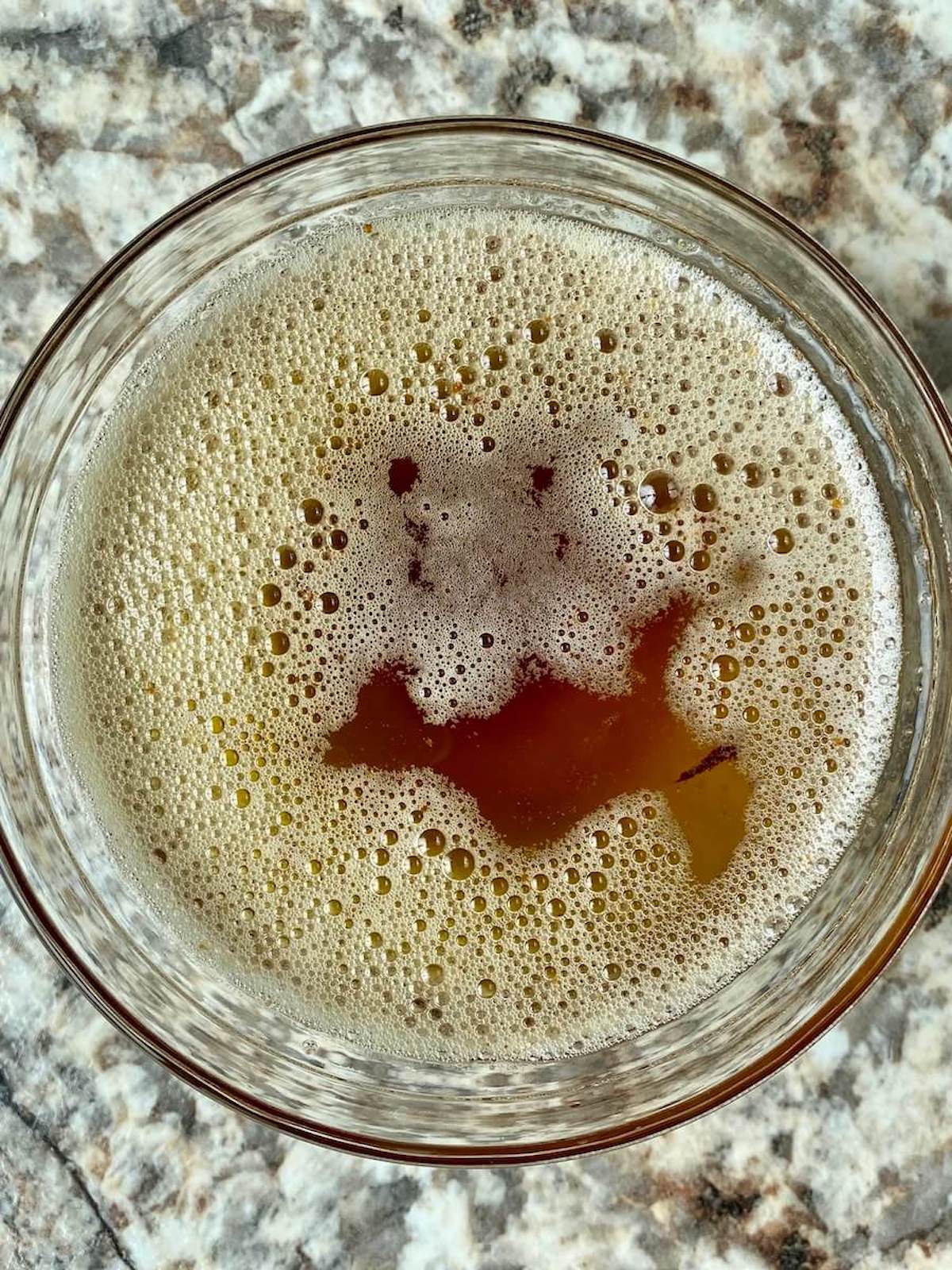
Step 3: Mix dry ingredients. In a large mixing bowl, combine the cornmeal, all-purpose flour, granulated sugar, baking powder, baking soda, and kosher salt.
Step 4: Whisk together wet ingredients. In a separate bowl, whisk together the eggs, buttermilk, and melted (or browned) butter.
Step 5: Combine wet and dry ingredients. Pour the wet ingredients into the dry ingredients. Gently stir until just combined. Do not over-mix; a few lumps are okay.
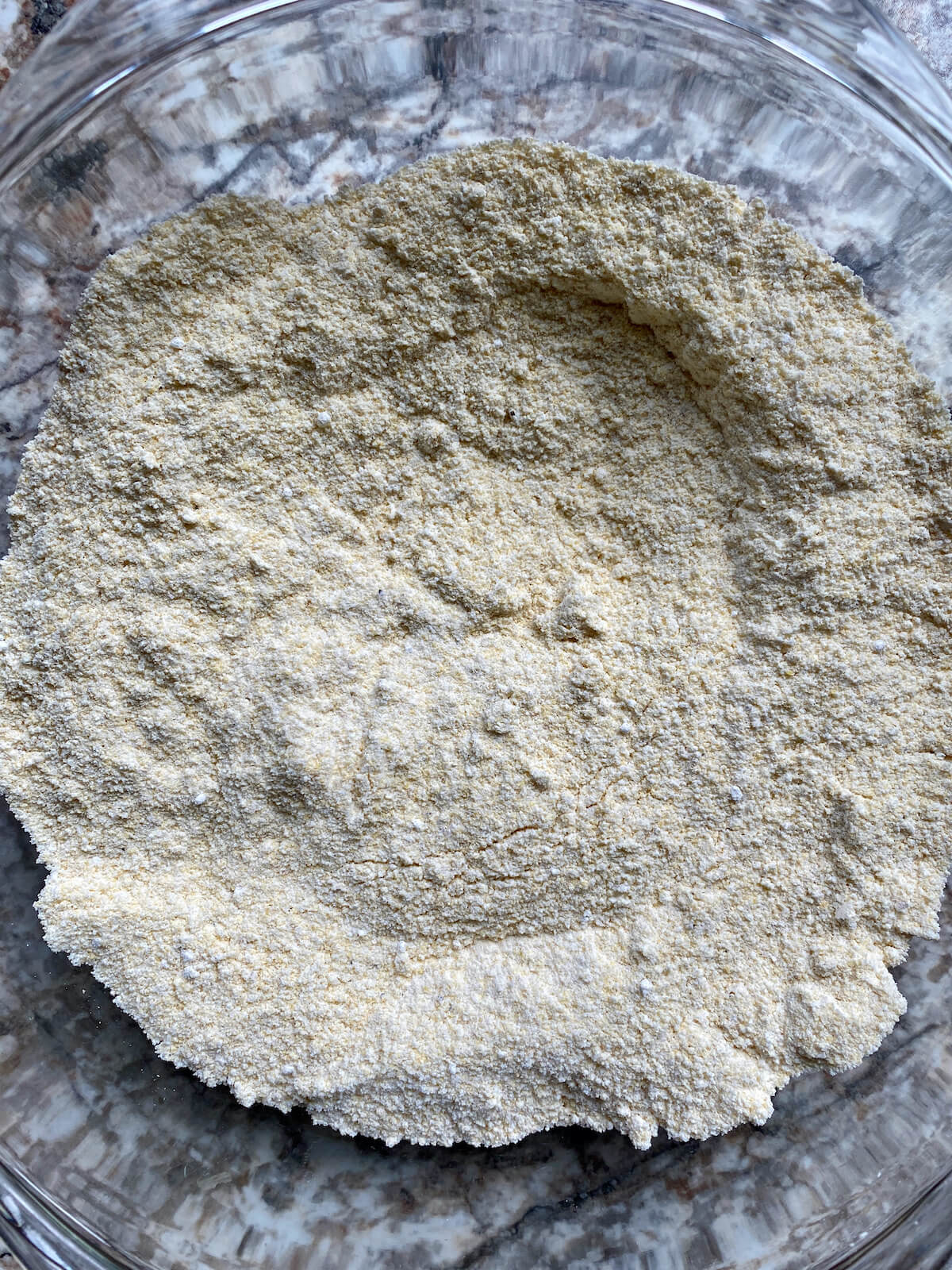
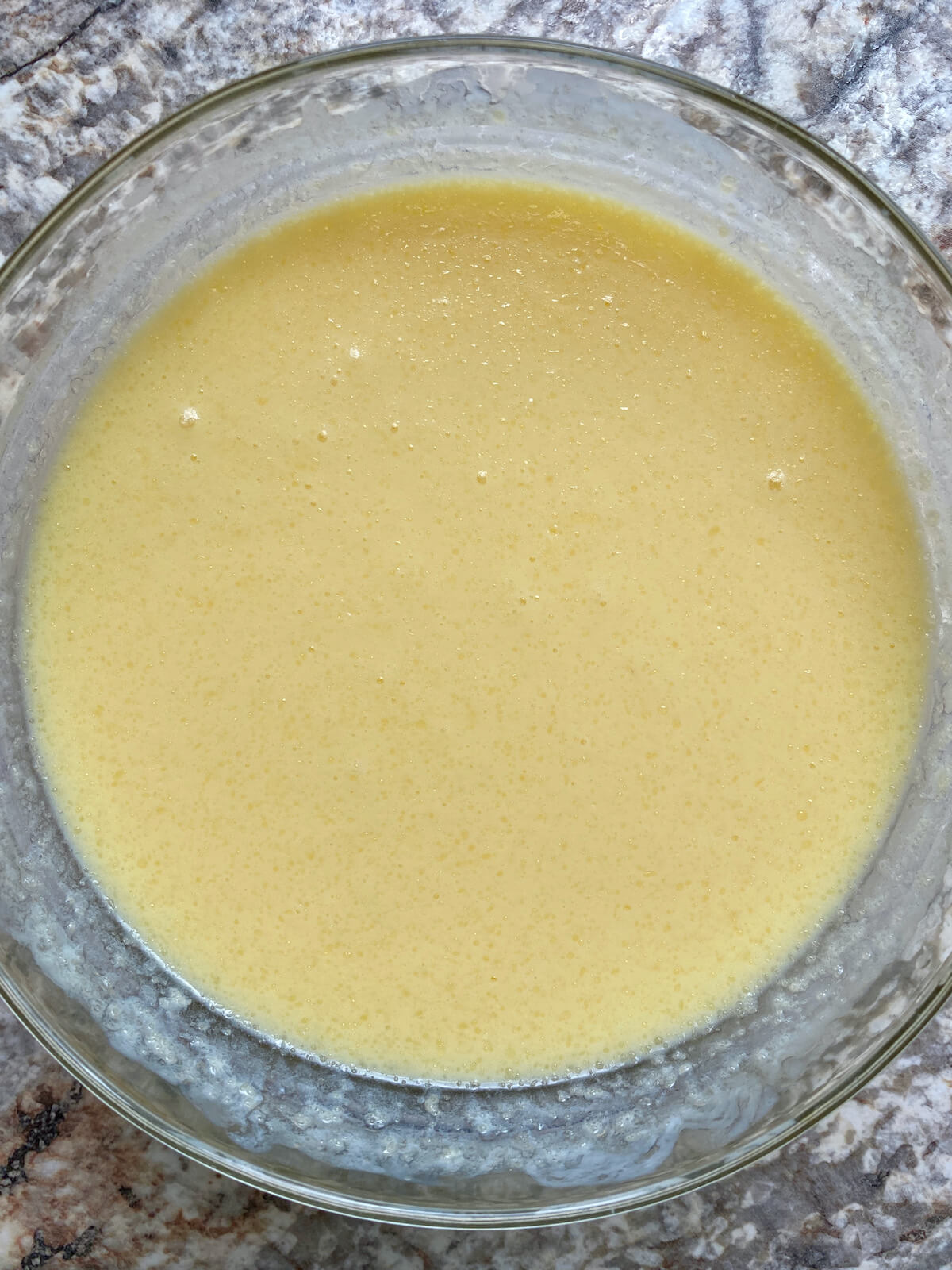
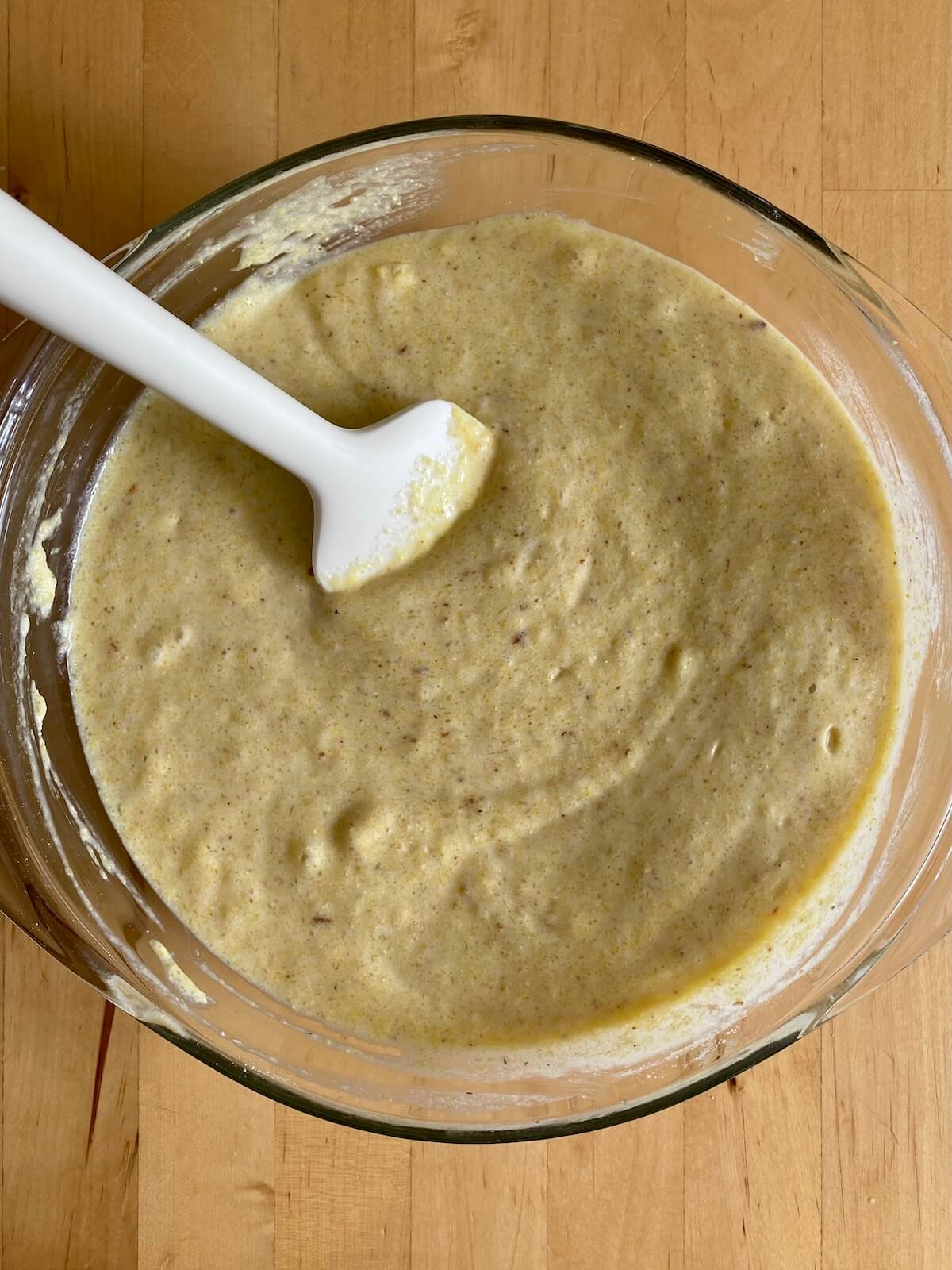
Step 6: Butter the skillet. Reduce the oven temperature to 375℉ and carefully remove the hot cast iron skillet from the oven. Add the remaining 1 tablespoon of butter to the skillet and let it melt.
Step 7: Pour the batter. Pour the cornbread batter into the hot, buttered skillet.
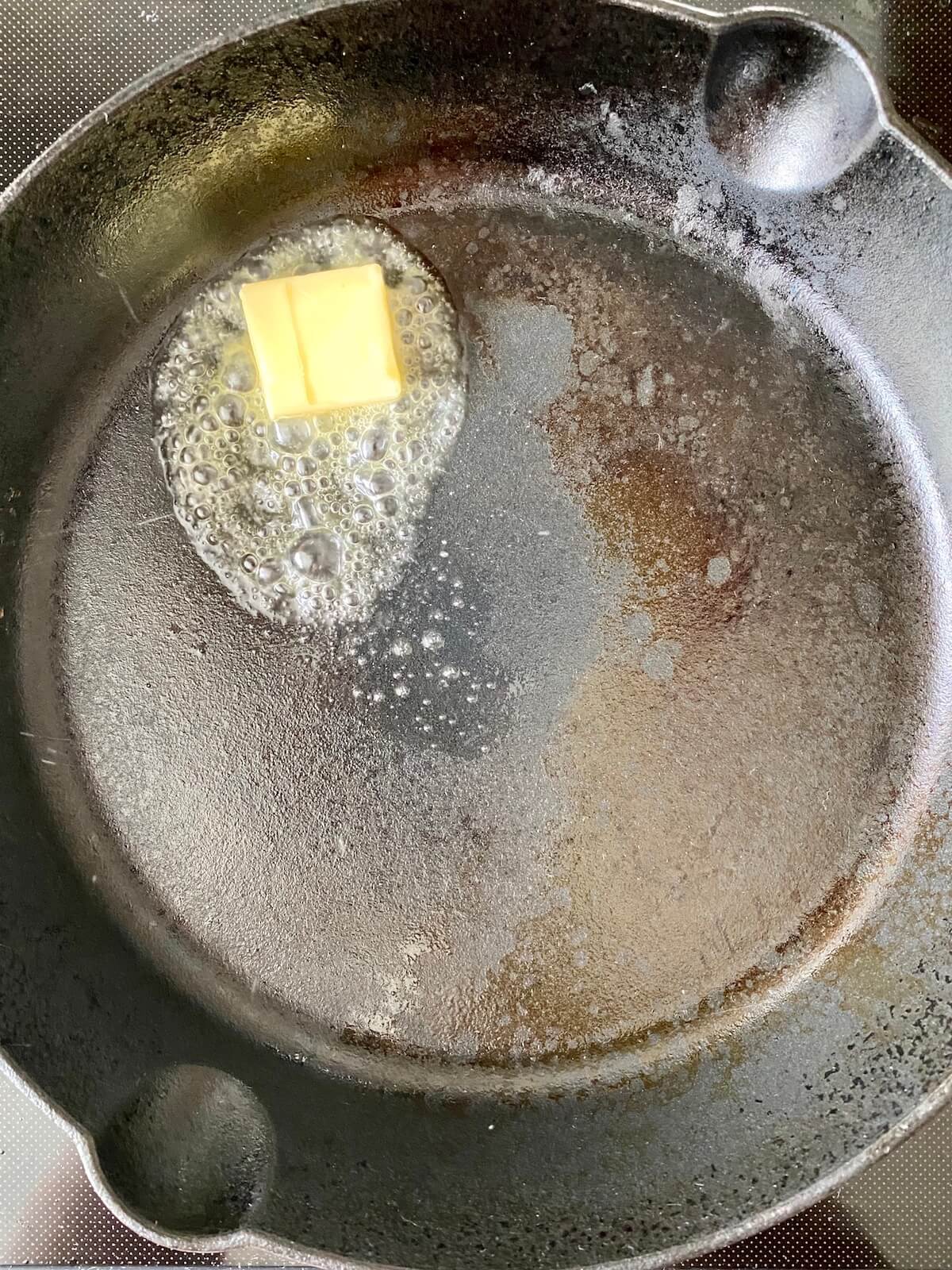
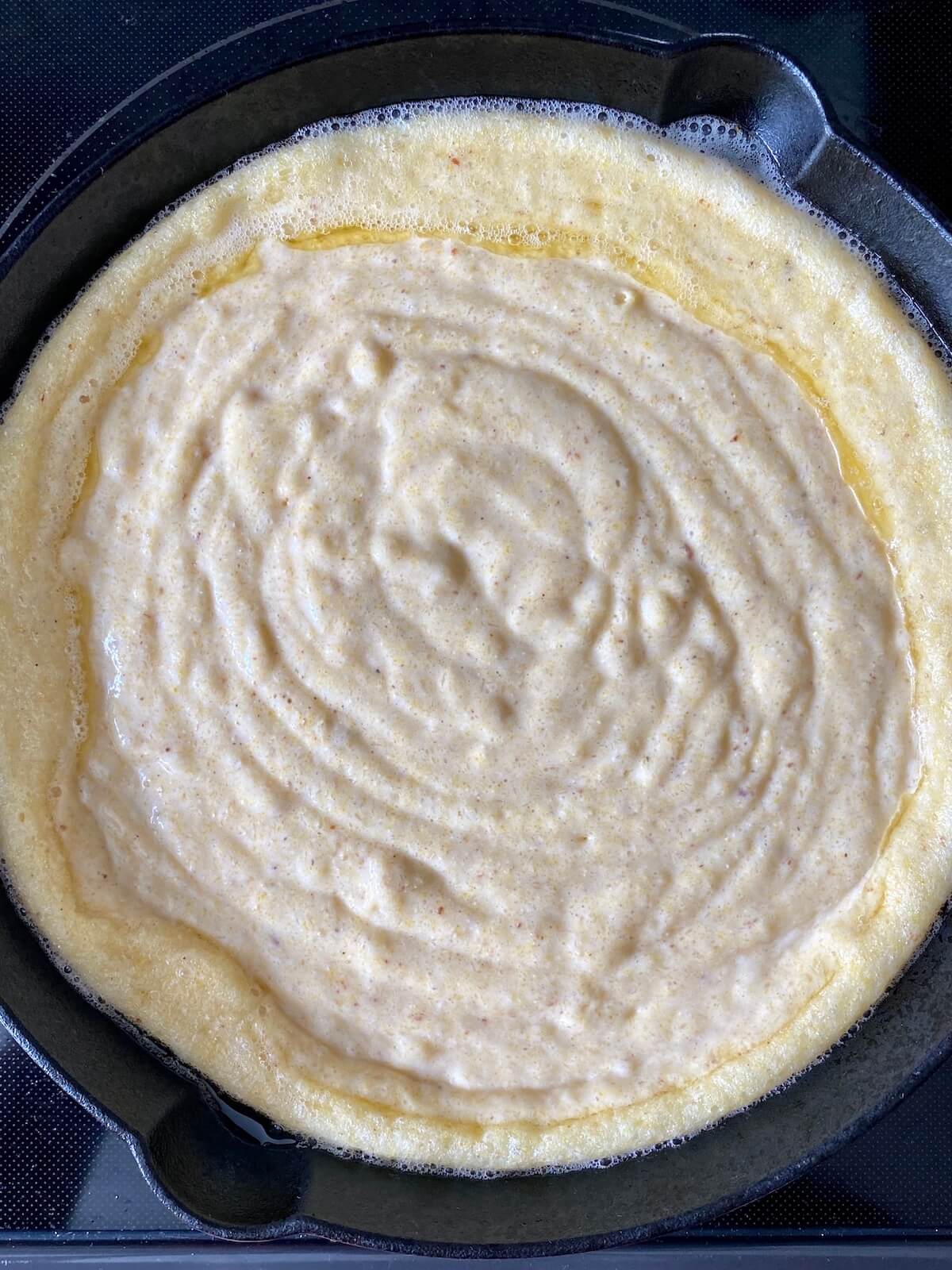
Step 8: Bake the cornbread. Place the skillet back into the oven. Bake for 20-25 minutes, or until the cornbread is golden brown on top and a toothpick inserted into the center comes out clean or with a few moist crumbs.
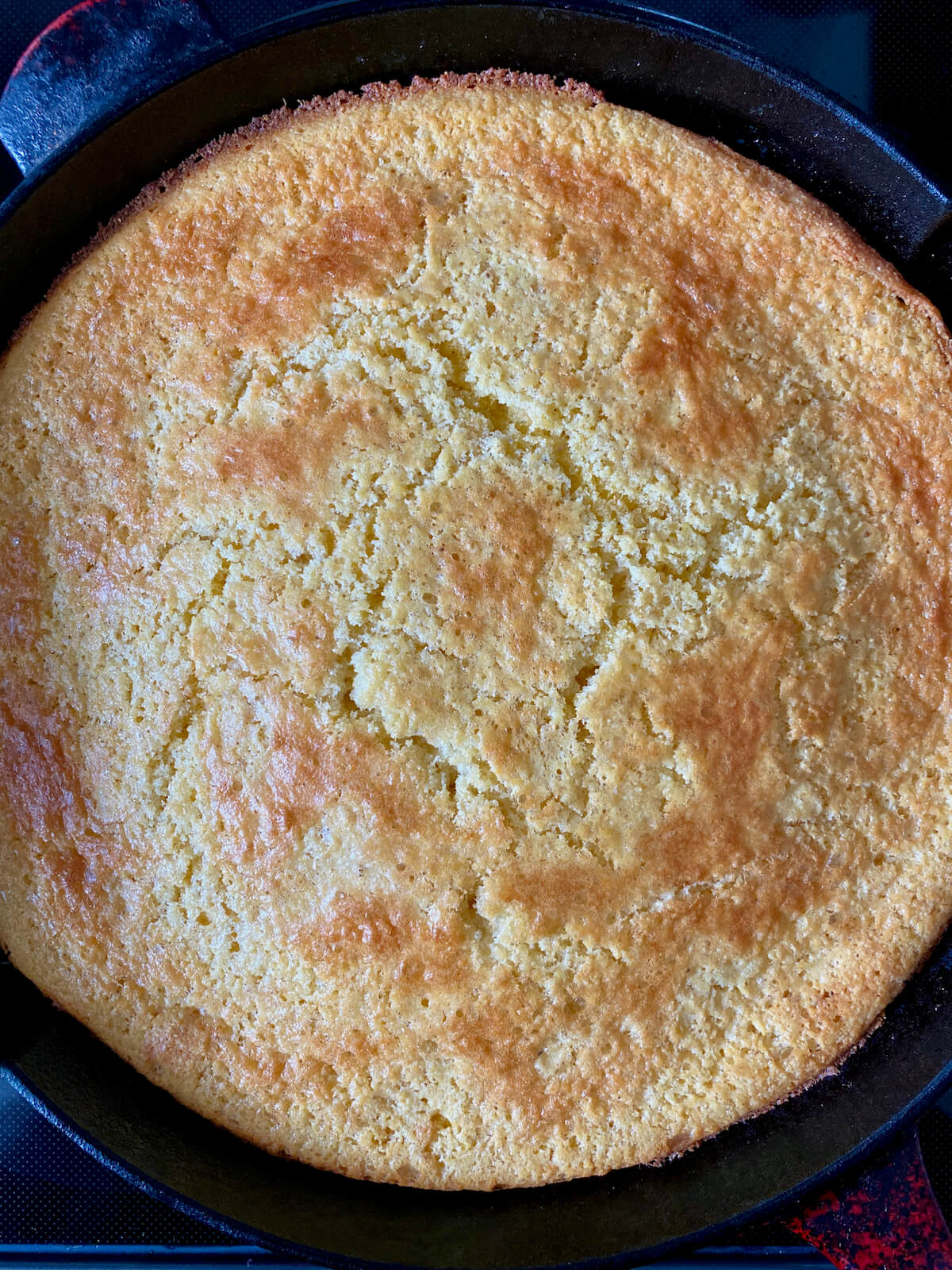
Old-Fashioned Cornbread (Video)
Tips for Success
- Preheat your cast iron skillet. A hot cast iron pan helps create a crispy, buttery crust (a.k.a the best cornbread ever).
- Measure accurately. For moist cornbread, weigh the flour and cornmeal in grams with a food scale. If using measuring cups, scoop and level the dry ingredients to prevent compaction.
- Adjust sweetness. Use more or less sugar to suit your personal taste preferences.
- Don't over-mix the batter. Over-mixing the batter will result in a tougher, more dense cornbread. To prevent this, gently fold the wet and dry ingredients together until just combined.
- Cool before slicing. Allow the cornbread to cool for a few minutes before slicing to let it set and prevent it from falling apart.
What to Serve With Cornbread in a Cast Iron Skillet
Old-fashioned sweet cornbread is a delicious and easy side dish that pairs well with a variety of your favorite comfort foods.
Pair this brown butter cornbread with hearty soups and stews like beef chili, turkey pumpkin chili, chicken noodle soup, or corn chowder, or serve it alongside pumpkin soup for a cozy fall meal.
Alternatively, complement your braised or roasted meats with this classic cornbread recipe. Consider it as a side for dishes like braised beef with mushroom gravy, braised turkey breast, roasted chicken, or BBQ pulled pork.
Finally, enjoy this moist cornbread as a snack on its own, or serve it with a variety of spreads or gravies. Some of my favorite pairings include homemade butter, strawberry apple jam, blueberry jam, and chicken gravy.
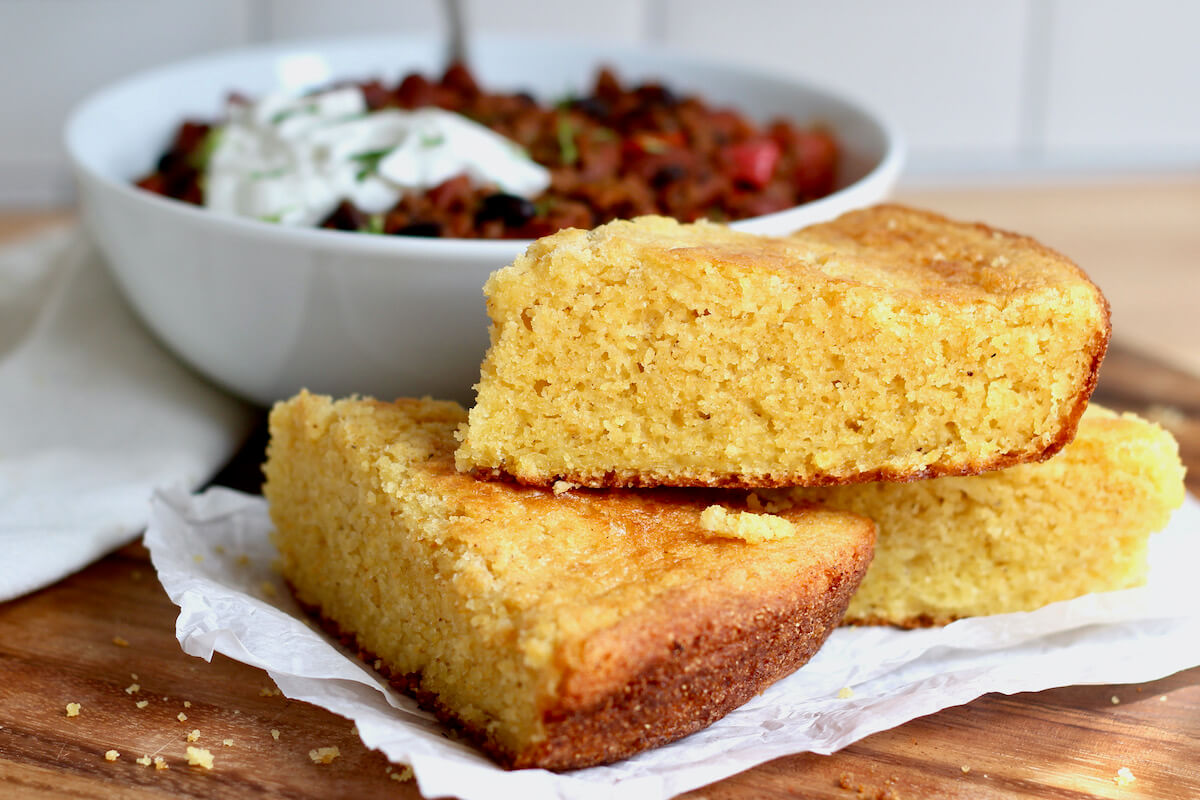
How to Use Leftover Cornbread
Leftover cornbread is incredibly versatile and can be repurposed into various delicious dishes. Here are some creative ways to use it:
- Cornbread Dressing or Stuffing
- Croutons
- Breadcrumbs
- Cornbread Casserole
- Bread Pudding
- Waffles
- French Toast
Storage and Reheating
How to Store
- Room Temperature- Store leftover cornbread in an airtight container or wrapped tightly in plastic wrap for 1-2 days at room temperature.
- Refrigerator- Store leftover cornbread in an airtight container or wrapped tightly in plastic wrap in the refrigerator for up to 7 days.
- Freezer- Freeze leftover cornbread in a freezer-safe plastic bag or container for up to 3 months.
💡Quick Tip: Learn all of my best tips and tricks for getting the most out of your homemade cornbread in my guide to freezing leftover cornbread.
How to Reheat
Make your old-fashioned cornbread taste as fresh as the day it was made using one of these easy reheating methods. For more detailed instructions, refer to my comprehensive guide on reheating cornbread.
If your cornbread is frozen, I recommend thawing it in the refrigerator or at room temperature before reheating.
- Stovetop- Melt a small amount of butter in a skillet over medium-low heat. Grill cornbread slices for 2-3 minutes on each side until warm and golden brown.
- Oven- Preheat oven to 350°F. Place cornbread slices on a baking sheet and cover tightly with aluminum foil. Heat for 10-15 minutes or until warmed through.
- Microwave- Place a single slice of cornbread on a microwave-safe plate and cover it with a damp paper towel. Microwave on half power (50%) for 45-60 seconds or until warm.
- Air Fryer- Preheat air fryer to 350°F. Wrap slices of cornbread in aluminum foil and arrange them in the air fryer basket in a single layer. Heat for 4-5 minutes or until fully warmed through.
Make Ahead
If you want to get a head start, you can bake this classic cornbread a day in advance and keep it at room temperature. Then, reheat it in the oven just before serving.
Alternatively, if you want to make the batter early, store the dry ingredients in a sealed container. When you're ready to bake, mix them with the wet ingredients to guarantee the best rise and texture.
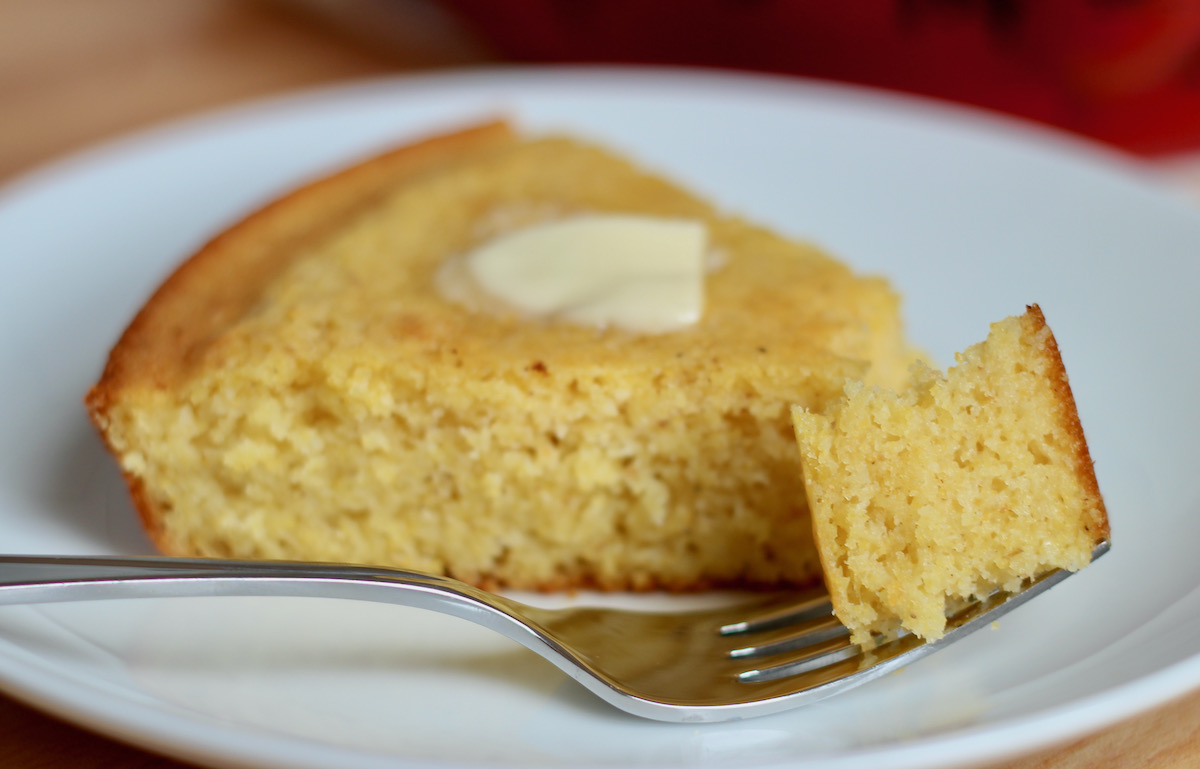
Frequently Asked Questions
For an authentic texture and flavor in your old-fashioned cornbread, I recommend using coarse ground yellow cornmeal. This type of cornmeal gives the cornbread a crumbly, rustic quality.
The best pan for baking cornbread is a cast iron skillet. It can be preheated in the oven and evenly distributes heat, resulting in a crispy crust and tender center.
Of course! If you don't have a cast iron skillet, try using a pie plate, casserole dish, or even a muffin tin instead. Keep in mind, however, that the cooking time may change if using a different piece of cookware.
While cornbread naturally has some crumble, using coarse cornmeal can increase it. If your cornbread is overly crumbly, consider reducing the amount of cornmeal or adding more all-purpose flour or buttermilk for better texture.
Yes, you can make cornbread muffins using this batter. Preheat the oven to 375°F, pour the batter into a muffin tin, and adjust the baking time accordingly (about 12-15 minutes).
Let's Connect!
Be sure to leave a comment below if you have any questions. You can also connect with me on Instagram, Facebook, Pinterest, or via email at [email protected].
📖 Recipe
Old-Fashioned Cornbread
Equipment
- Stainless steel skillet optional
Ingredients
- 8 + 1 tablespoons unsalted butter divided
- 1 ¼ cups (150 grams) cornmeal
- ¾ cup (90 grams) all-purpose flour
- ¼ cup granulated sugar
- 2 teaspoons baking powder
- ½ teaspoon baking soda
- 1 teaspoon kosher salt
- 2 large eggs
- 1 ½ cups buttermilk
Instructions
- Place a 10-inch cast iron skillet in the oven and preheat to 425°F.
- Option 1: Melt the butter. Place the 8 tablespoons of butter in a microwave-safe bowl and heat in 30-second intervals, stirring in between, until fully melted. Set aside to cool slightly.8 + 1 tablespoons unsalted butter
- Option 2: Brown the butter. In a stainless steel skillet over medium heat, melt the 8 tablespoons of butter. Continue to cook, stirring frequently, until it turns golden brown with a nutty aroma. Be vigilant to prevent burning. As soon as you see the milk solids change to a toasty brown color, remove the pan from the heat and pour the butter into a heat-proof bowl to prevent it from burning. Set aside to cool slightly.8 + 1 tablespoons unsalted butter
- In a large mixing bowl, combine the cornmeal, all-purpose flour, granulated sugar, baking powder, baking soda, and kosher salt.1 ¼ cups (150 grams) cornmeal, ¾ cup (90 grams) all-purpose flour, ¼ cup granulated sugar, 2 teaspoons baking powder, ½ teaspoon baking soda, 1 teaspoon kosher salt
- In a separate bowl, whisk together the eggs, buttermilk, and melted (or browned) butter.1 ½ cups buttermilk, 2 large eggs, 8 + 1 tablespoons unsalted butter
- Pour the wet ingredients into the dry ingredients. Gently stir until just combined. Do not overmix; a few lumps are okay.
- Reduce the oven temperature to 375℉ and carefully remove the hot cast iron skillet from the oven. Add the remaining 1 tablespoon of butter to the skillet and let it melt, ensuring the bottom and sides are well coated.8 + 1 tablespoons unsalted butter
- Pour the cornbread batter into the hot, buttered skillet. It should sizzle slightly.
- Place the skillet back into the oven. Bake for 20-25 minutes, or until the cornbread is golden brown on top and a toothpick inserted into the center comes out clean or with a few moist crumbs.
- Allow the cornbread to cool for a few minutes before slicing. Serve warm, and enjoy!
Notes
- Measure accurately. For moist cornbread, weigh the flour and cornmeal in grams with a food scale. If using measuring cups, scoop and level the dry ingredients to prevent compaction.
- Adjust sweetness. Use more or less sugar to suit your personal taste preferences.
- Perfect Pairings: Both Classic Chili and Turkey Pumpkin Chili pair well with this cornbread recipe.
- Storage: Store leftover cornbread in an airtight container at room temperature for up to 2 days, in the refrigerator for up to 7 days, or in the freezer for up to 3 months.

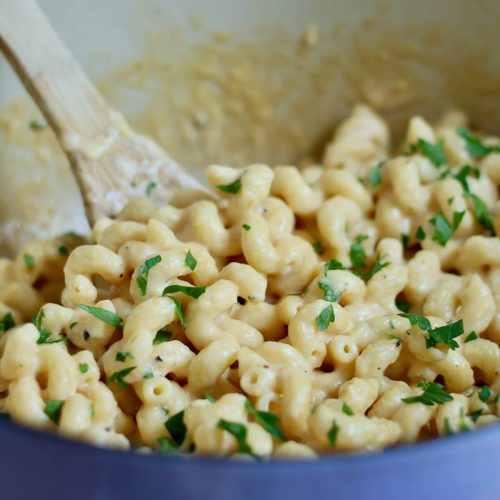
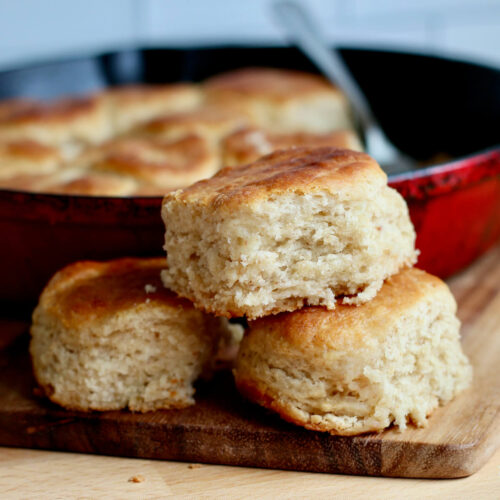
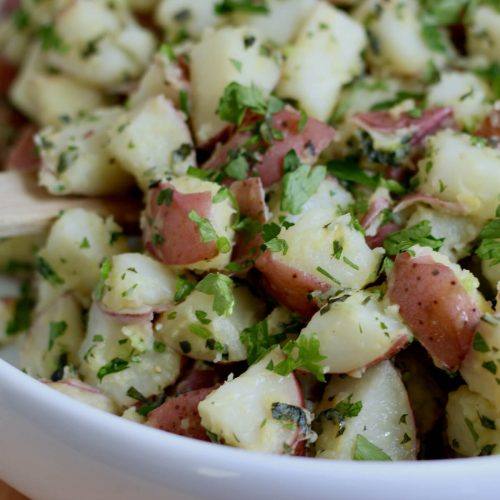
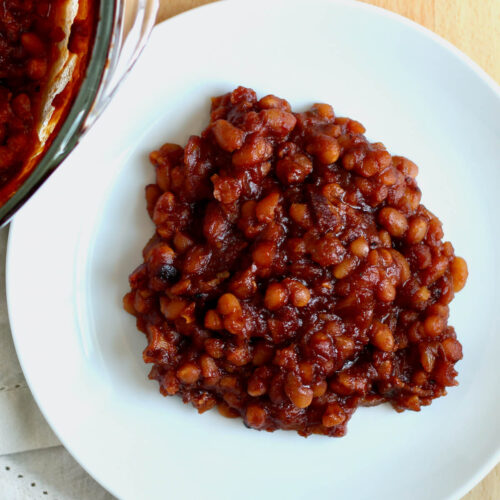
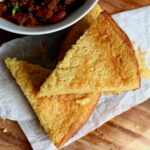
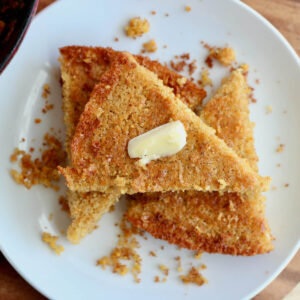
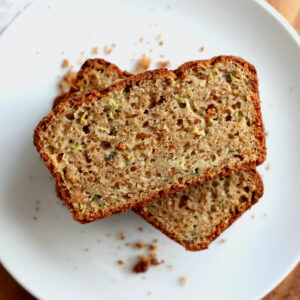

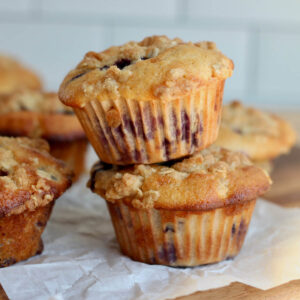
Comments
No Comments